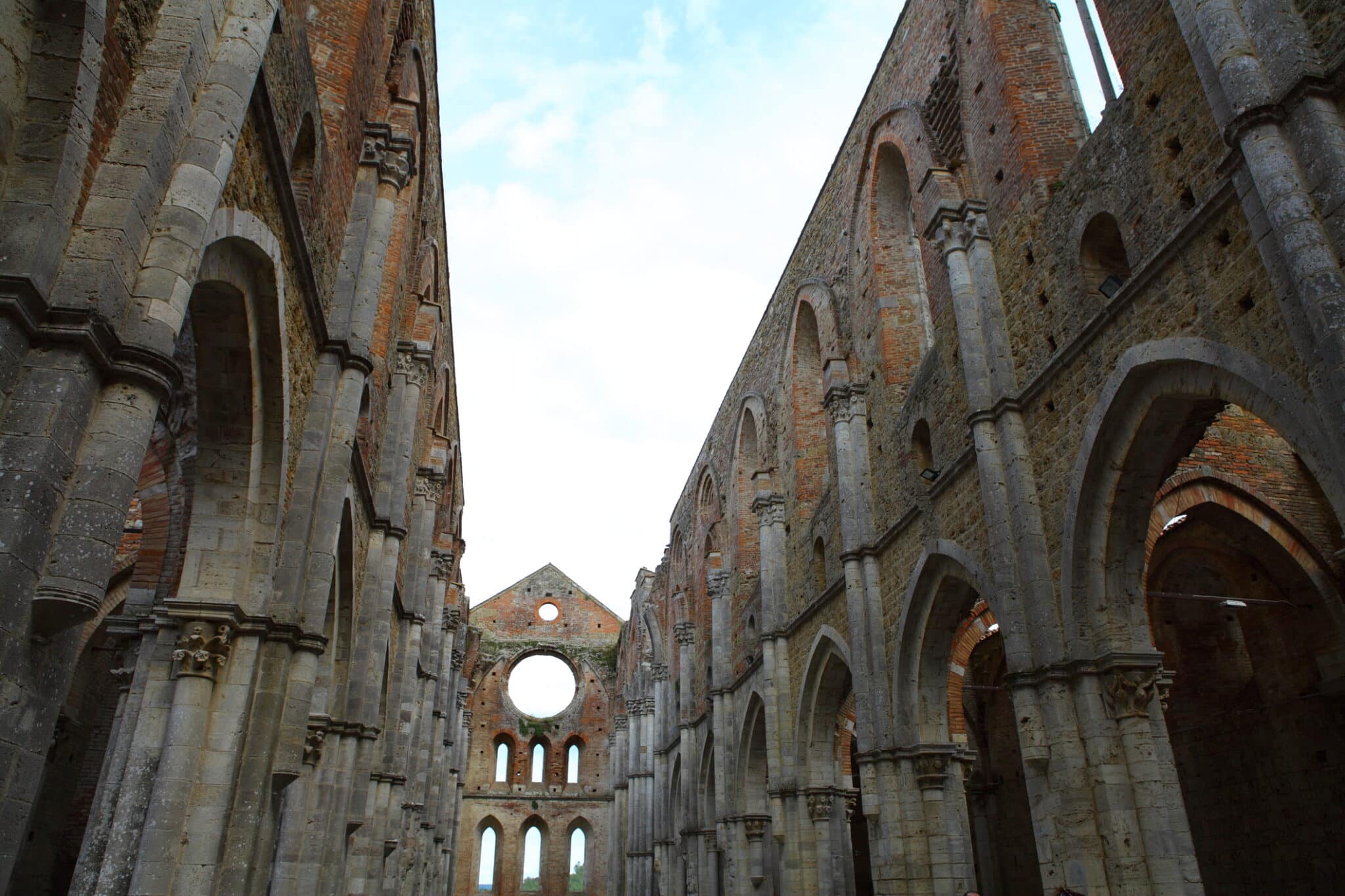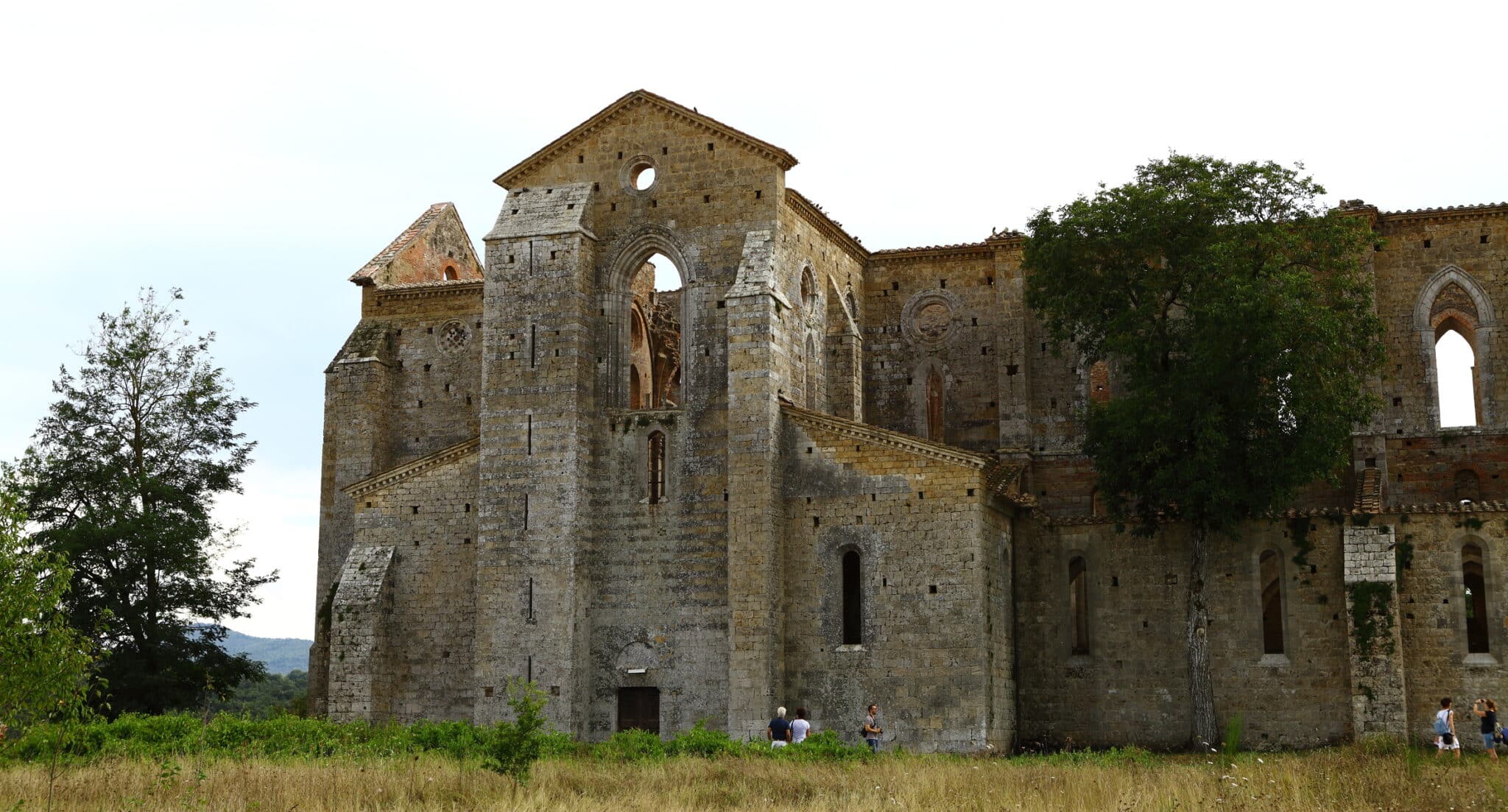The figure of San Galgano and the mystery of its sword in the stone represent one of the most fascinating enigmas of Italian folklore. This historyrooted in the medieval tradition, it mixes elements of faith, miracles and chivalric narratives, evoking surprising parallels with other legends Europe, such as King Arthur's. But who was St Galgano and what truth lies behind the legend of his sword?
Galgano Guidotti, born in 1148 in Chiusdino, a small village in the province of Sienahe lived an existence that seemed predestined for the typical course of the nobility of the time. Brought up in a noble familyhe was naturally directed towards the military and chivalric life, symbols of prestige and power. His youth was characterised by indulging in the earthly pleasures and lusts that his position allowed, a life led unrestrained by pomp and celebrations.
However, the turning point in Galgano's life came at the age of 32 yearsa period in which he began to receive mystical visions. These visions, profound and meaningful, led him to a critical reflection on his life of escapism and violence. Feeling an inner calling, he decided to completely renounce his past life and embrace an existence of hermitage and spirituality.

The most significant and symbolic moment of his transformation occurred when Galgano, guided by a spiritual force, led his horse to Mount Hedgeslocated not far from his home. Here, in front of numerous witnesses, he performed an extremely symbolic gesture: he tried to drive his sword into the rock, a sign of his definitive renunciation of violence. Contrary to all expectations, the sword stuck into the rock as if it had penetrated soft butter, leaving only the hilt and guard uncovered. This event was immediately recognised as a miraclea divine manifestation that confirmed the sincerity and depth of his spiritual conversion, transforming him from a warrior into a symbol of peace.
After his death in 1181, the figure of Galgano was quickly elevated to that of a saint by the Catholic Church. In honour of the miracle of the sword and his life as a hermit saint, the Chapel of Montesiepi on the exact spot where he had thrust his sword into the rock. This site soon became a place of worship and pilgrimagesymbol of spiritual transformation and the renunciation of violence.
Around this chapel, over the years, grew a vast Cistercian monastery, l'Abbey of San Galganowhich developed as one of the main religious and cultural centres of the time. The abbey prospered for several centuries, becoming a point of reference for the Christian community and spiritual travellers until its decline and abandonment in the 16th century.

Today, the Abbey of San Galgano remains one of the Italy's most impressive Gothic ruinsIt is shrouded in an atmosphere of mysticism and charged with history. The sword of San Galgano, still visible and well preserved in the rock of the chapel, continues to be a powerful symbol of peace and renunciation of weapons. Every year, the site attracts thousands of pilgrims and visitors, fascinated by the story of the knight who chose the path of peace, leaving an indelible mark on Italy's spiritual and cultural landscape.
L'Abbey of San Galgano welcomes visitors and believers every day of the yearoffering the opportunity to explore a site of great historical and spiritual importance in any season. The doors of the church open regularly at 9:00 a.m.allowing guests to enjoy the tranquillity of the place from the early hours of the day.
The abbey's closing times vary according to the time of year, adapting to different light conditions and the needs of visitors. During the winter months, from November to March, the abbey closes at 17:30still allowing the site to be enjoyed in the late afternoon. In the months of April, May and Octoberclosing hours extend until 18:00offering additional time for visits during the longer spring and autumn days.

In the summer months, the abbey stays open longer to accommodate the largest number of visitors and take advantage of the brighter evenings. In June and Septemberscheduled to close at 19:00while in the months of July and Augustwhen the days are at their longest and warmest, the abbey closes at 20:00. This allows visitors to fully enjoy the beauty and peace of the site even on hot summer evenings.
These flexible timetables are designed to facilitate access to the site for a broad spectrum of the public, guaranteeing everyone the chance to enjoy a unique and meaningful experience, immersed in the history and spirituality that only the Abbey of San Galgano can offer.
We are a young Web Agency with more than 10 years of experience, we love travelling and discovering new places, that is why we write every day on Italia Delight our travel site.

Italia Delight is your definitive guide to Italian restaurants, offering a comprehensive directory and web marketing services to enhance every dining experience. Discover, taste and connect with Italian tradition.
To provide the best experiences, we and our partners use technologies like cookies to store and/or access device information. Consenting to these technologies will allow us and our partners to process personal data such as browsing behavior or unique IDs on this site and show (non-) personalized ads. Not consenting or withdrawing consent, may adversely affect certain features and functions.
Click below to consent to the above or make granular choices. Your choices will be applied to this site only. You can change your settings at any time, including withdrawing your consent, by using the toggles on the Cookie Policy, or by clicking on the manage consent button at the bottom of the screen.
One Response
Tutto, tutto assolutamente e successo nell’Italia. La Spada nella Roccia di San Galgano, la Spada della Roccia di Val di Terminillo negli Abruzzi, la piccola e vicina città di Leonessa, nella leggenda di re Arturo Lyonesse, cità natale di Sir Tristam, el Dr. Victor Frankenstein della novela di Mary Shelley, nato in Napoli, anche Robin Hood un personagio che non mai essistito nella Inghilterra, che nella realità era il ladro avventuriero Ghino di Tacco e… e…La Marsigliesa, dela quale i francesi hanno rubato la musica, opera dall piamontese Giovanni Battista Viotti (Variazioni in do maggiore). Italia madre di tutto. Sono orgoglioso di essere italiano.